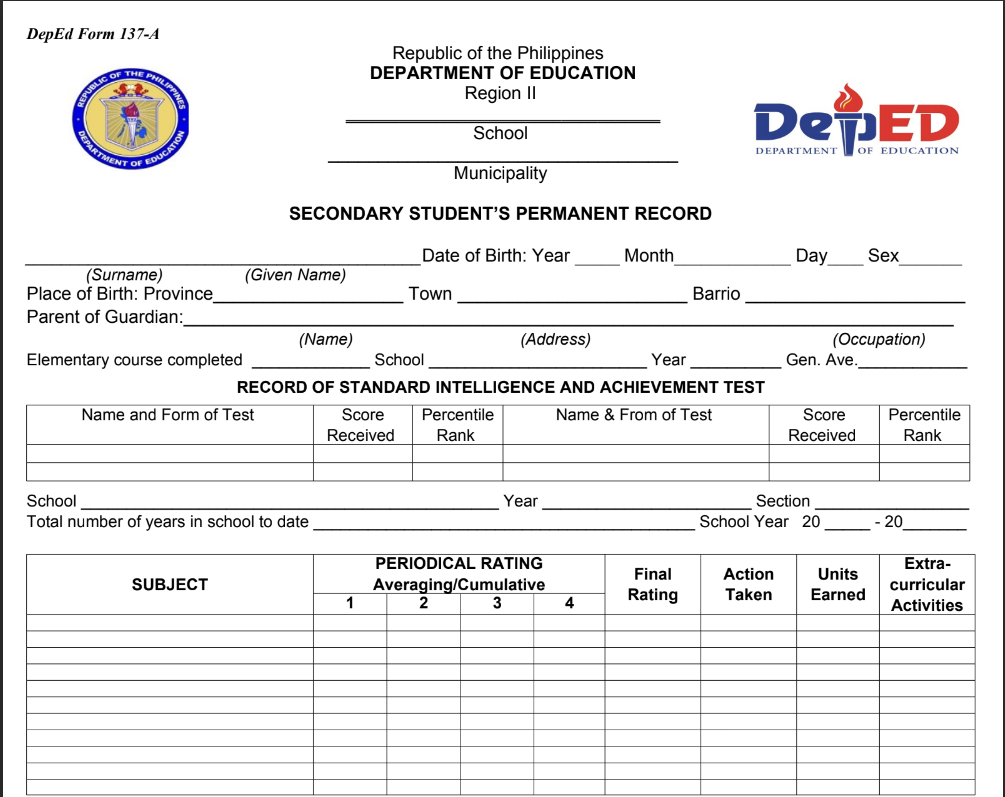In the realm of education, numerous documents play a vital role in capturing a student’s academic journey, accomplishments, and personal information. One such document is Form 137, also known as the Permanent Record, which serves as an essential tool in educational systems, particularly in countries like the Philippines.
This article aims to shed light on the nature and significance of Form 137, providing a comprehensive guide to its purpose and the role it plays in the educational landscape.
Form 137 is an official document used in the education system in some countries, including the Philippines. It is also known as the Permanent Record, and it contains important academic information about a student. Here is some information about Form 137 and its purpose:
- Contents: Form 137 typically includes details such as the student’s personal information (name, date of birth, address), academic records (grades, subjects taken, attendance), and other relevant information (awards, special recognitions, disciplinary records).
- School Record: Form 137 serves as a comprehensive record of a student’s academic performance throughout their time in a particular school. It provides a snapshot of the student’s educational journey, including their grades, subjects studied, and other relevant information.
- Transfer and Enrollment: Form 137 is often required when students transfer from one school to another or when they apply for higher education institutions. It helps the receiving school or institution assess the student’s academic background and determine appropriate placement or admission.
- Verification: Form 137 is also used for verification purposes. It allows educational authorities, employers, or other interested parties to confirm the student’s educational achievements and performance.
- Historical Record: In some cases, Form 137 serves as a historical record of a student’s academic progress. It can be used for reference or research purposes in the future.

